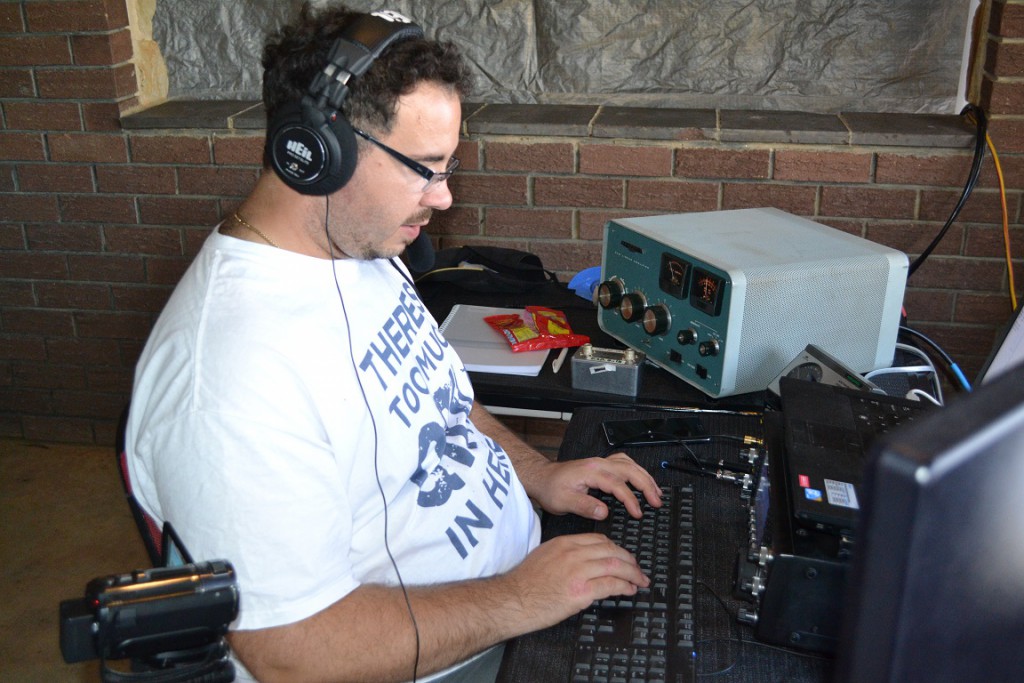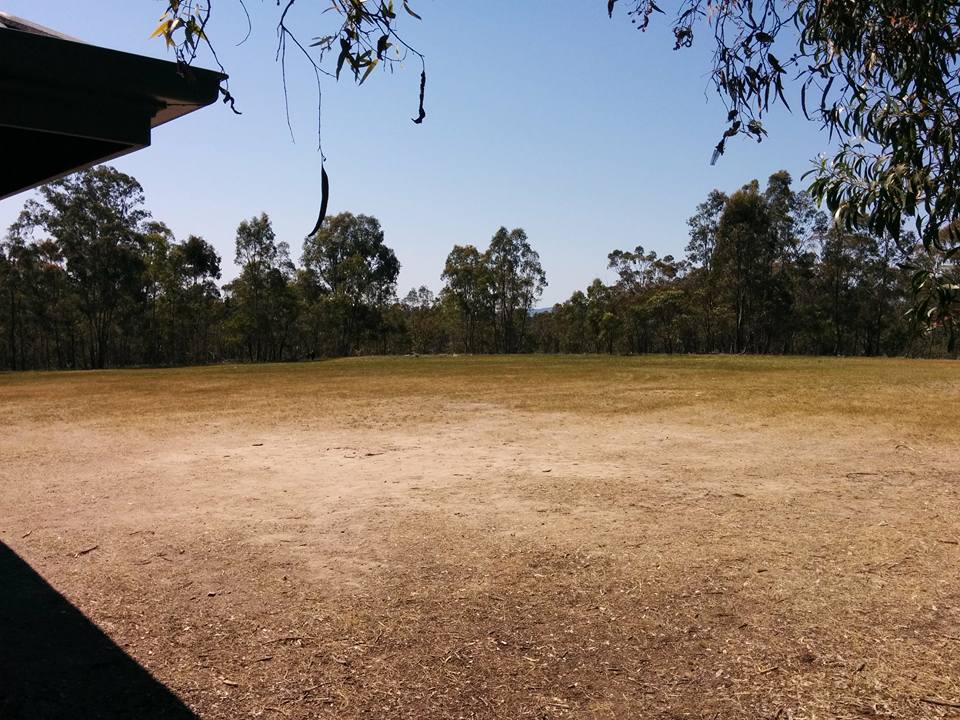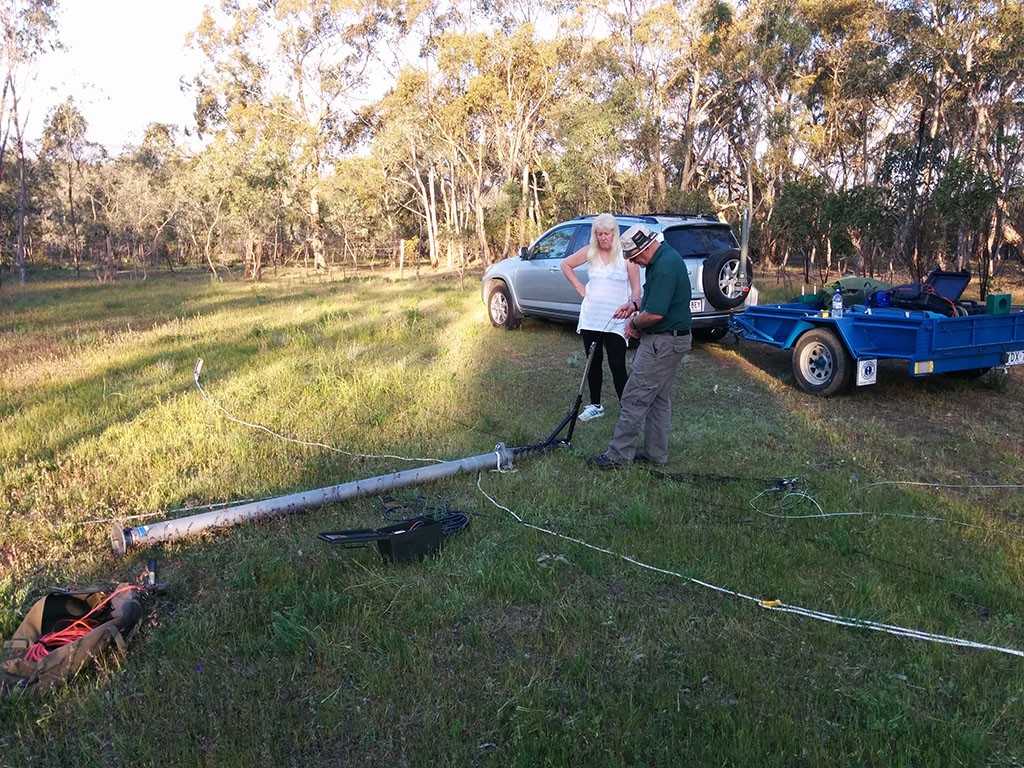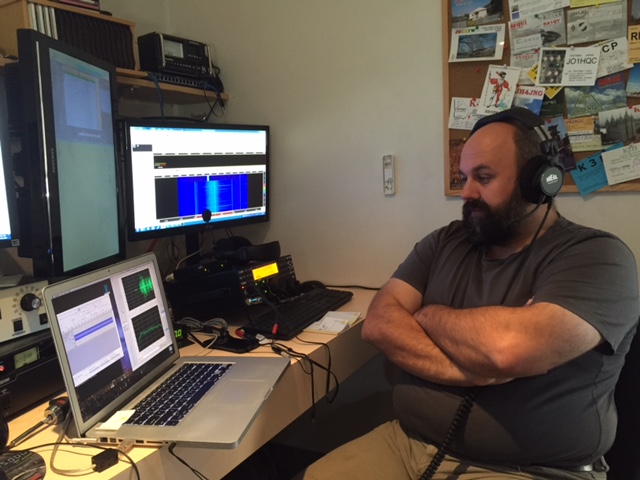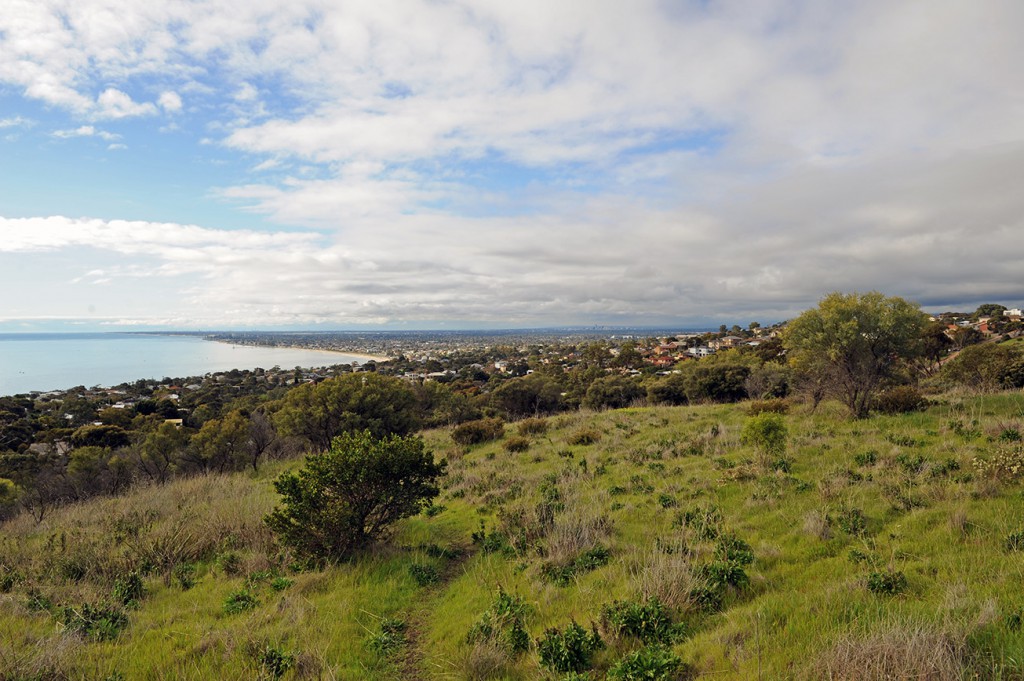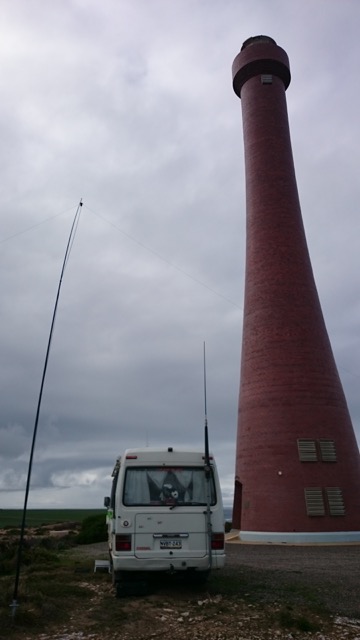The station is built and raring to go. Here are some early photos from the activities up at Para Wirra Recreation Park.
VK5ARG entering Oceania DX Contest: Oct 3rd/4th PORTABLE
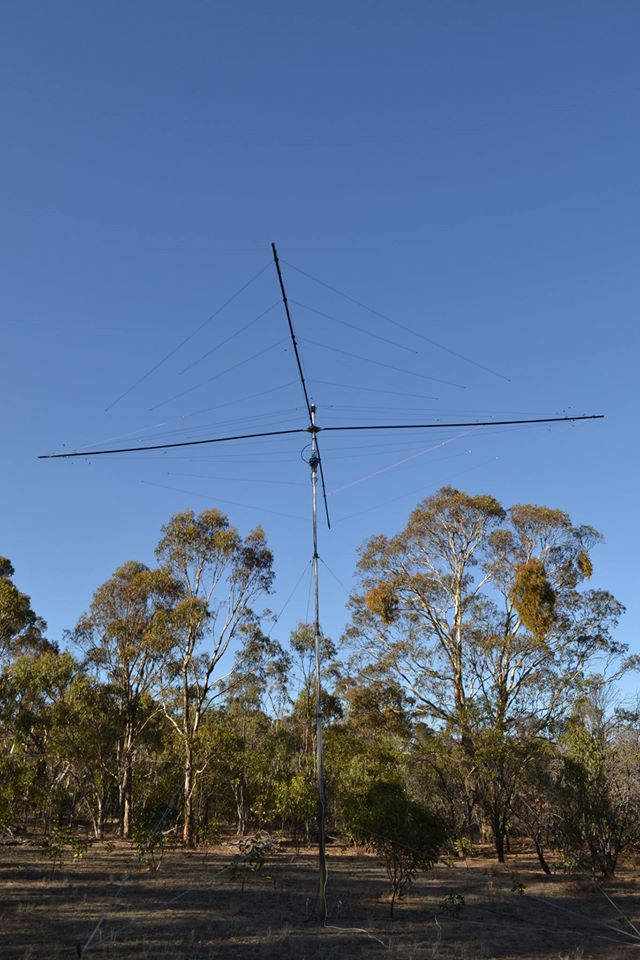 Next Weekend is the Oceania DX Contest, SSB section. Members of the AREG will be activating the Club Call sign VK5ARG for this event from the Para Wirra Recreation Park, north east of Adelaide. The OceaniaDX contest provides a great opportunity for Oceania stations to get on the air as there is lots of activity in our region. Whats more, the DX chasers from around the world will be actively looking for Oceania! Hopefully the propagation will favour VK5. More information on the OCDX contest can be found via the WIA website.
Next Weekend is the Oceania DX Contest, SSB section. Members of the AREG will be activating the Club Call sign VK5ARG for this event from the Para Wirra Recreation Park, north east of Adelaide. The OceaniaDX contest provides a great opportunity for Oceania stations to get on the air as there is lots of activity in our region. Whats more, the DX chasers from around the world will be actively looking for Oceania! Hopefully the propagation will favour VK5. More information on the OCDX contest can be found via the WIA website.
Contest Times: 08:00 UTC (17:30hrs ACST) Saturday 3 October to 08:00 UTC (18:30hrs ACST) Sunday 4 October 2015 (Yes Daylight savings starts this weekend too!)
AREG welcomes all amateurs with an 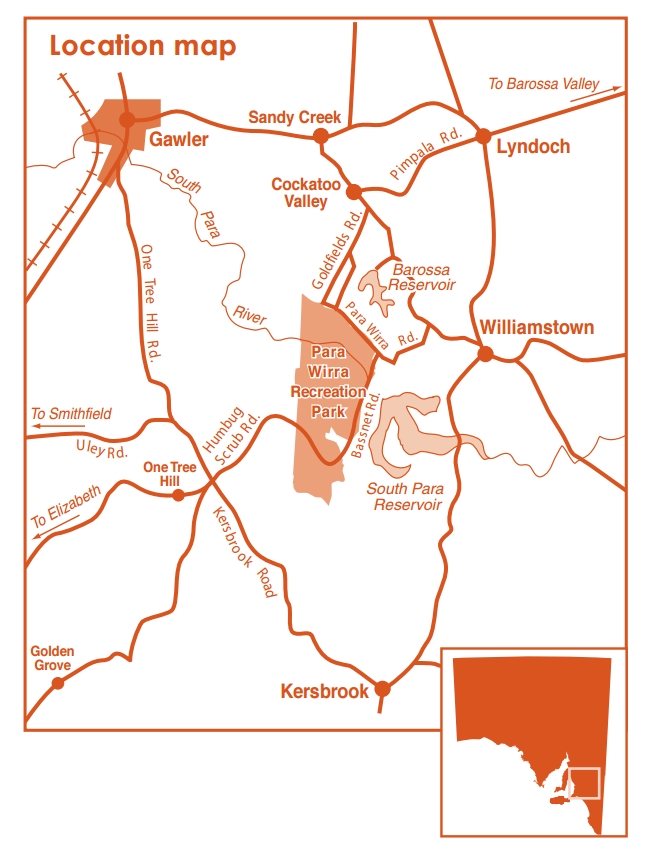 interest in portable field stations and contesting to come on up to the park and visit us over the weekend. Entry to the park will cost $10 / vehicle for a one time fee for the weekend.
interest in portable field stations and contesting to come on up to the park and visit us over the weekend. Entry to the park will cost $10 / vehicle for a one time fee for the weekend.
While the park closes at dusk, the radio club has sought and obtained special permission from the park rangers to remain in the park overnight. To find our operating location, enter the park from the main gate off Humbug Scrub Road, proceed past the the park office then past North Oval until you reach the toilet blocks, picnic shelters and open paddock at the end of the bitumen.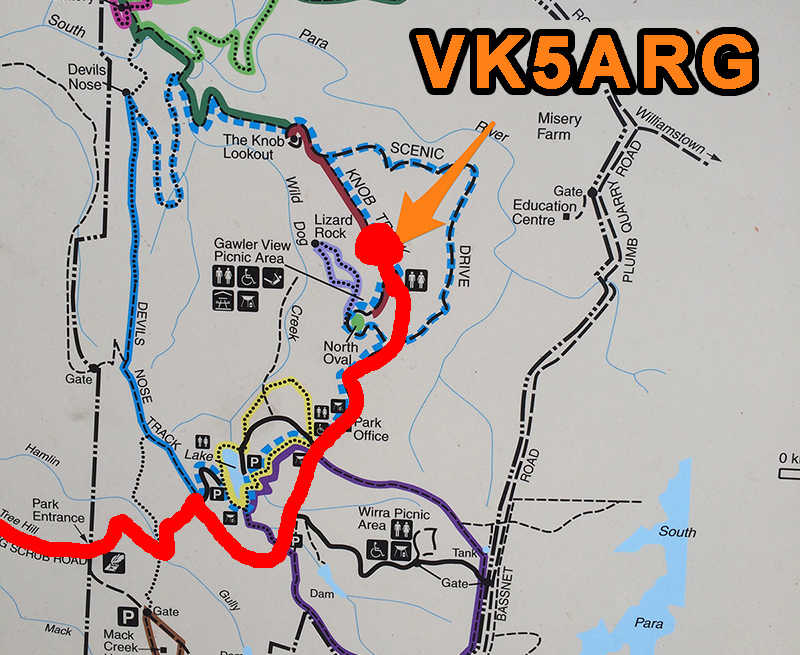
More than just contesting!
Saturday Afternoon prior to the contest AREG will be having a HF activity afternoon with a mixture of SSB and FreeDV operation on both 20m and 40m. This will be another great opportunity to test FreeDV. The VK5ARG team will be monitoring the FreeDV QSO finder, and posting regular blog updates as the afternoon evolves. Activity is planed from 1500-1700 Local time but may start earlier depending on interest.
Update: Friday 2nd October – Construction Begins….
The crew have arrived and are studying their blank canvas. Hmmm how to decorate this paddock with antennas? Lets put up the 40m antenna over here!
VK5RWN DSTAR – Operational Future secure until June 2016
VK5RWN D*STAR Repeater’s FUTURE without the WIA?
In November 2014, the AREG took over 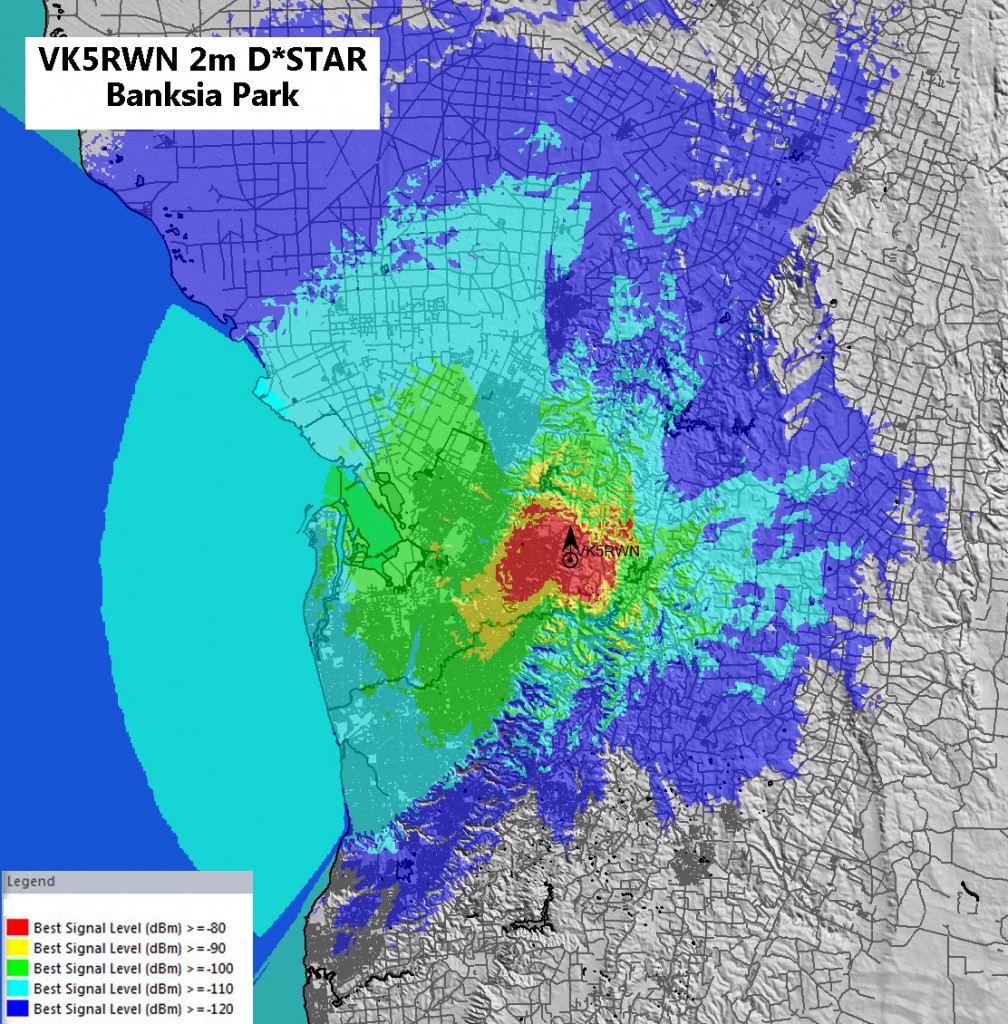 over the full maintenance and financial support the VK5RWN D-Star repeater system in Adelaide after it was originally co-sponsored by the WIA. Since then, AREG has been working to reduce the operating costs of providing this service to the Adelaide amateur radio community.
over the full maintenance and financial support the VK5RWN D-Star repeater system in Adelaide after it was originally co-sponsored by the WIA. Since then, AREG has been working to reduce the operating costs of providing this service to the Adelaide amateur radio community.
Currently VK5RWN is the single largest operating cost the AREG currently has on its budget (the power bill alone is ~$600/year). Insurance, license fees, maintenance and rent nudge this figure closer to $1000/year.
At this stage, the AREG committee has agreed that the club has sufficient reserves to be able to support the system until the end of June 2016, at which time the system will again be reviewed. In order to maintain it beyond this time, the AREG really needs the registered DSTAR users to offer their ongoing financial support. As such, the club is now actively seeking yearly donations or preferably more of the D*STAR user community to become members of AREG.
If you are a registered user of this system then please consider joining AREG and throwing your support behind it’s continued operation. Alternatively, you can also consider making a yearly donation.
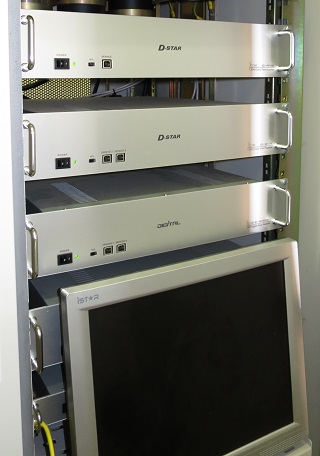 AREG has not been sitting idle in trying to find ways to keep the system running. So far, the following strategies have been implemented:
AREG has not been sitting idle in trying to find ways to keep the system running. So far, the following strategies have been implemented:
- The ADSL Internet link and associated phone line have been replaced with a microwave system and donated internet bandwidth from a club member (This was the single biggest expense to running the system).
- The system power supplies were replaced with more efficient switchmode ones
These changes yielded an operating cost reduction of around $1000/year.
The next areas being tackled include:
- likely closure of the 1299.7MHz 128kbit/s data port (which records show hasn’t been accessed since being commissioned)
- review whether the 1273.7MHz port remains on air considering it’s very low utilization.
- replace the current PC with one that consumes a LOT less power
These changes will occur over the next 6 months, and will go someway to overcoming the operational costs of the site. None the less, it will still remain the most expensive to run site on AREG’s books.
Next Meeting FRIDAY 18th Sept – Starting out with Arduino Micros
Arduino, Teensy 2, the TI MSP430, 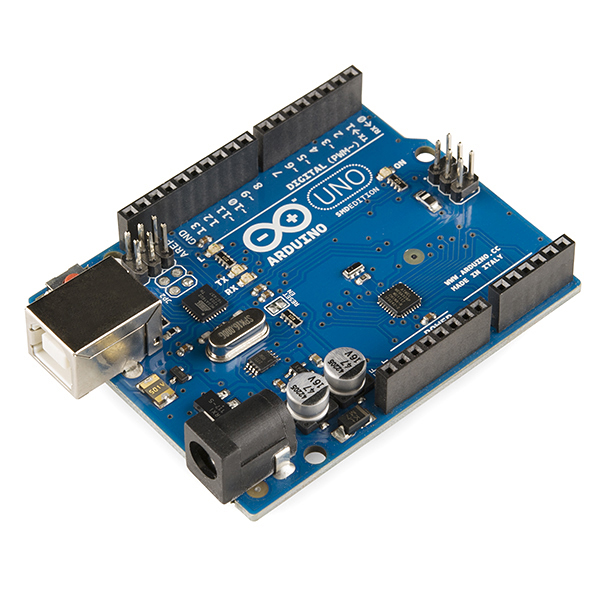
the Picaxe, Raspberry Pi’s, Banana Pi’s, Beagle Bone Black, Cubie Boards, PC Arduino’s, these are some of the myriad of micro controller or micro computer boards.
Confusing? Are you interested in learning to use or play with micro controllers and don’t know where to start?
Well, come along to the next AREG general meeting this coming Friday evening, the 18th of September and Matt, VK5ZM, will give an introductory talk on micro controllers with an emphasis on, “Getting started in Arduino”!
The evening starts at 7:45 pm at the Reed Beds hall, Fitch Road Fulham.
The invitation is open to all persons with an interest in amateur radio and for this evening, Arduino! So come along all, join in with AREG members and learn a bit about the Arduino, meet members of AREG and enjoy the evening with a dynamic group of like minded amateur radio enthusiasts.
Coffee, tea and cake will be on for a light supper whilst everyone has the opportunity to mix, mingle and discuss your interests of the evening.
FreeDV QSO Party – Activity Log for the 12/13th September 2015
5.00pm – Wrapping Up
Well, that about ends our FreeDV experiments for today. It has been great to see stations across VK and the world come and try this new mode. It was disappointing that the ionosphere ‘flamed out’ when it did but this is not going to be the last time we rally FreeDV users to come together and have a go, so if you missed out making a contact today, stay tuned for the next event.
We would like to thank all stations that took part or listened in and hope to see you all next time!
Regards, The team from the Amateur Radio Experimenters Group!
3:30pm – Now beaming LP Europe on 14236kHz
We are now attempting contact with Europe long path using FreeDV 700B. OE3GBB is reporting 70% copy and S4-5 – unfortunately we cant hear his responses as we have S9 noise here. Still, it is impressive that we are being heard!
Update: we did achieve contact with OE3GBB using a remote receiving station!
2:00pm – back from lunch and working some locals
40m is working into VK2 this afternoon on FreeDV 700B mode with contacts to VK2KDK and partial contacts to VK1KV. We will continue to have VK100ANZAC calling CQ beaming east this afternoon on 40m.
11:45am – all quiet – unfortunately
Well, our attempt here in Australia at getting the VK100ANZAC callsign out on freeDV is not going real well. The ionosphere coupled with local power line noise (which has sprung up today) have combined to make 40m and 20m very quiet (or should I say very noisy) indeed. We are still calling CQ with the keyer on 40m (7175) in 700B mode and are intermittently calling/listening on 20m (14236) in 1600 mode, but we are not working many stations.
We will press on in the hope conditions improve as the day progresses.
11:00am – worked VK3DBP on 40m
One station that has been actively working us is VK3DBP who has made several contacts including one around 11am ACST on 40m. Congrats for your enthusiasm for this new digital HF voice mode!
So, what’s this700B mode you are talking about?
On August 25th, David VK5DGR released a new version of the FreeDV software labelled version 1.0.0. This new low 700bps bitrate mode has better signal to noise characteristics than the original 1600bps mode but lower quality audio.
You can get the latest version and give 700B mode a try from these links:
10:10am – worked VK2DGH on 700B
Great signal now heard from VK2DGH on 700B mode. Also getting good SNR reports from VK1MTS (Rx Only) of 10dB SNR to VK100ANZAC – thanks for listening and joining in!
09:47am – contacts into VK4
VK4CAG has just had a great contact with VK100ANZAC on FreeDV 1600 – SNR 15dB – excellent signal into Mannum (SA) today and VK1MTS reported decoding VK4CAG on IRC.
Sunday 13th: 09:35am ACST – QSY 40m 7175kHz
80m NVIS into Adelaide was fading so we have moved to 40m in anticipation of the end of the WIA broadcasts around the nation. Look for VK100ANZAC calling CQ on that channel.
Sunday 13th: 09:00am ACST
Now also worked VK5APR on 80m. Also getting good reports from Michael VK5ZEA in Port Lincoln and Jeff VK5IU in Murray Bridge
Working VK5KDK on FreeDV 700B on 80m 3634.5kHz
Sunday 13th: 8:30am ACST – Experiments on 80m
This morning we are trying our luck with 80m. Currently VK100ANZAC is calling on 3.634.5 to give the local VK5 stations an opportunity. We have worked VK5IU on 700B mode and are continuing to call CQ.
Michael VK5ZEA has been hearing us in Port Lincoln.
We will be on 40m, a little later in the morning right after the Sunday morning WIA broadcast.
20m activity has been attempted USA longpath but no joy and nothing heard. The ionosphere is still not cooperating.
The operation continues…..
Sunday 13th: Look out for VK100ANZAC FreeDV on 80m as well
Following the relatively poor HF conditions we have set up one of the FreeDV VK100ANZAC stations to now also operate on 3635kHz. We will intermittently operate that frequency today (particularly early in the morning). If you want to attempt a contact with us on 80m chat with us on the FreeDV qso finder or on the FreeDV IRC Channel online!
Status Update: Saturday 12th September 9pm-12am ACST
The day has arrived and we are on the air with VK100ANZAC for the AREG FreeDV QSO Party. Unfortunately the ionosphere is not being very cooperative tonight with our first planned activation and so far no contacts have been made on 20m. Very little is being heard on the band at all, but we are there listening and calling none the less.
We also are listening to 40m around 7177kHz. Contacts were attempted with VK6 on 40m, and while faint signals were being heard, no decodes were achieved.
Discussion on the FreeDV QSO Finder shows that there is a lot of interest around however with a number of US stations attempting contacts between themselves. If nothing else, this increased activity meets the goal of getting people to come and try FreeDV!
1150pm – just tried a contact with K5WH on 700B mode – might have detected a few syllables but that’s about all. The ionosphere is not playing nice tonight…
Earlier in the day Saturday 12th
6 contacts were achieved earlier in the day on 40m with local Australian stations. Most of those were achieved using the newly released 700B mode. 5 stations succeeded in contacting VK100ANZAC using it. This lower bitrate mode has proved much more resilient in the poor HF conditions being seen this weekend. So, if you have an older version of FreeDV installed, then consider upgrading to the latest version and give the new 700B mode a try. (see www.freedv.org for details)
(Note: unfortunately 700B mode isn’t supported as yet by the SM1000 hardware adaptors so to use it you will need the latest PC software).
Updates
Keep watching this web-post for updates on progress!
FreeDV QSO Party – QSL details for VK100ANZAC control station
The FreeDV International QSO party is coming up this weekend. Activity begins Saturday evening on the following schedule:
Bands and Times?
Various bands will be used, with the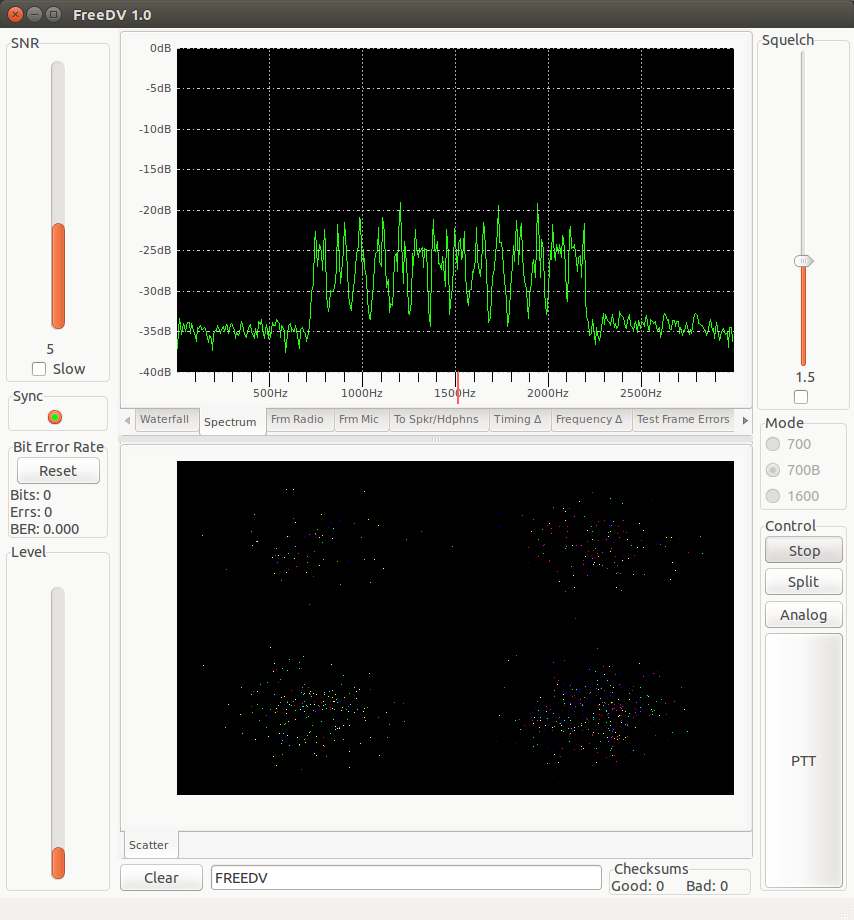 primary call channels being 14236kHz +/-QRM and 7175kHz. The VK100ANZAC net control station will be listening and intermittently calling on FreeDV on the following bands:
primary call channels being 14236kHz +/-QRM and 7175kHz. The VK100ANZAC net control station will be listening and intermittently calling on FreeDV on the following bands:
- Saturday evening September 12th from 1130UTC (9pm Australian Central Standard Time (ACST)) beaming short path North America on 20m (west coast).
- Sunday morning September 13th from 2130-2330UTC (7am-9am ACST) on 20m beaming long path North America (east coast)
- Sunday morning from 2230-0130UTC (8-11am ACST) will see local VK contacts targeted on 40m
- 0430-0730 UTC (2-5pm ACST) will focus signals towards Europe Long Path as well as VK on 20m.
- 0530-0830 UTC (3-6pm ACST) will see 40m targeting VK/ZL again
- During the middle of the day on Sunday we may activate on 15m as well targeting Asia/Japan/Northern VK. Keep watching the AREG blog for details.
Many stations are already gearing up to take part and the operator team is getting ready to head to the station of Chris VK5CP for the weekend where the activity will originate from.
I’m a Foundation License holder – how can I get involved?
One of the very recent questions however was “How can Foundation Licensees take part in this event? While it is true Australian Foundation License holders can’t transmit FreeDV, they can still receive it. So why not have a go at installing the software on your PC, connect your radio’s audio output to your PC soundcard and have a listen around the bands for FreeDV signals!
You can provide feedback to the FreeDV operators during this weekend via Internet Relay Chat (IRC) on irc.freenode.net. (http://webchat.freenode.net/?channels=freedv) via the #freedv channel.
The FreeDV QSO Finder will also be used during the weekend. You can take a look and monitor the action here: http://qso.k7ve.org/ Note that the login system for this page uses the HamQTH Callsign Database, which doesn’t have many newer Australian Callsigns. If you get a “Callsign not found” error, you will need to register at: http://www.hamqth.com/register.php If you are listening only, you can log in as “SWL”.
You can also send us an SWL QSL Card via www.eQSL.cc! When a user sets the SWL/HAM checkbox in his Profile to SWL, it automatically forces all incoming and outgoing cards to say ‘Confirming SWL Reception’ instead of the usual ‘This Confirms Our 2-Way QSO’. If you are an SWL, just make sure to go to My Profile and set yourself up as an SWL. If you are a ham, when you send an eQSL to an SWL, it will automatically put the correct wording into the card.
VK100ANZAC QSL Cards for this event
All amateurs can also receive a QSL card for working the VK100ANZAC freeDV station. The WIA VK100ANZAC QSL card policy is as follows:
QSL cards are softcopy only via:
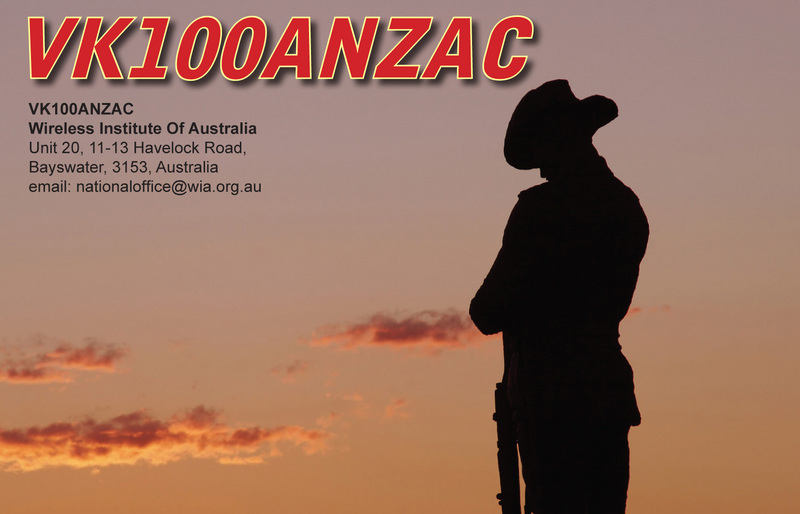 Looking forward to working you all during the FreeDV QSO Party this weekend!
Looking forward to working you all during the FreeDV QSO Party this weekend!
VK5ARG ILLW Activity 2015
On Saturday 15th Members of AREG participated in the International Lighthouse and Lightship Weekend event. AREG reserved the Marion Rocks Lighthouse – AU-0118 to operate as VK5ARG, while Peter VK5KX went over to Edithburgh on Yorke Peninsula and activated Troubridge Hill lighthouse.
Marino Rocks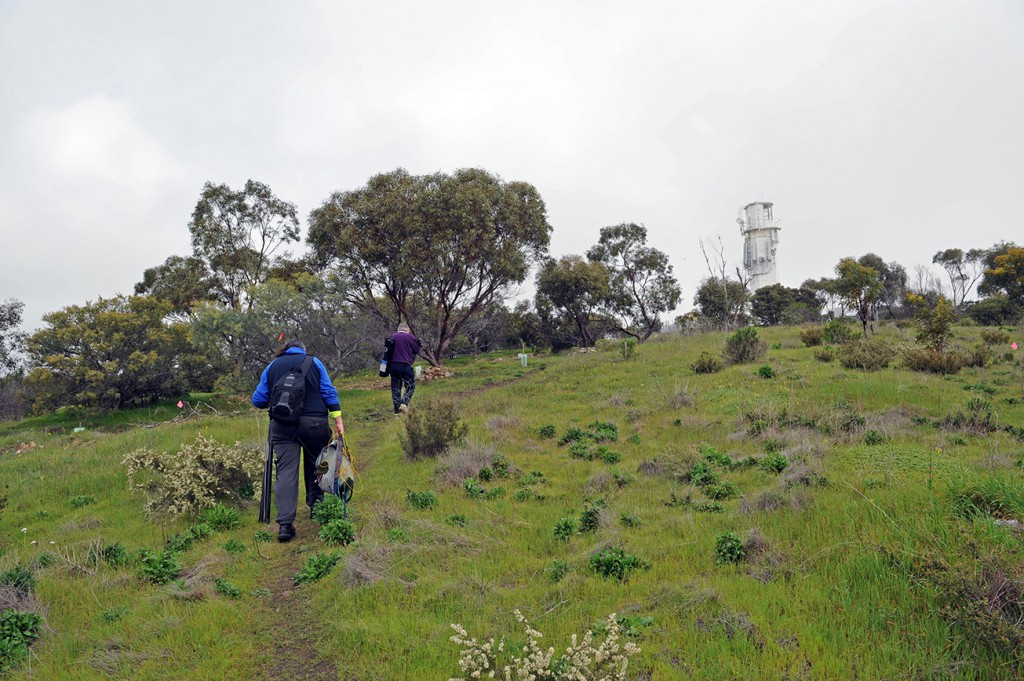
Bob, VK5FO and Ray, VK5RR arrived onsite at around 1pm in the cold and light rain. They took a walk from the carpark up to the Lighthouse in the Marino Conservation Park looking for a suitable place to set up the station.
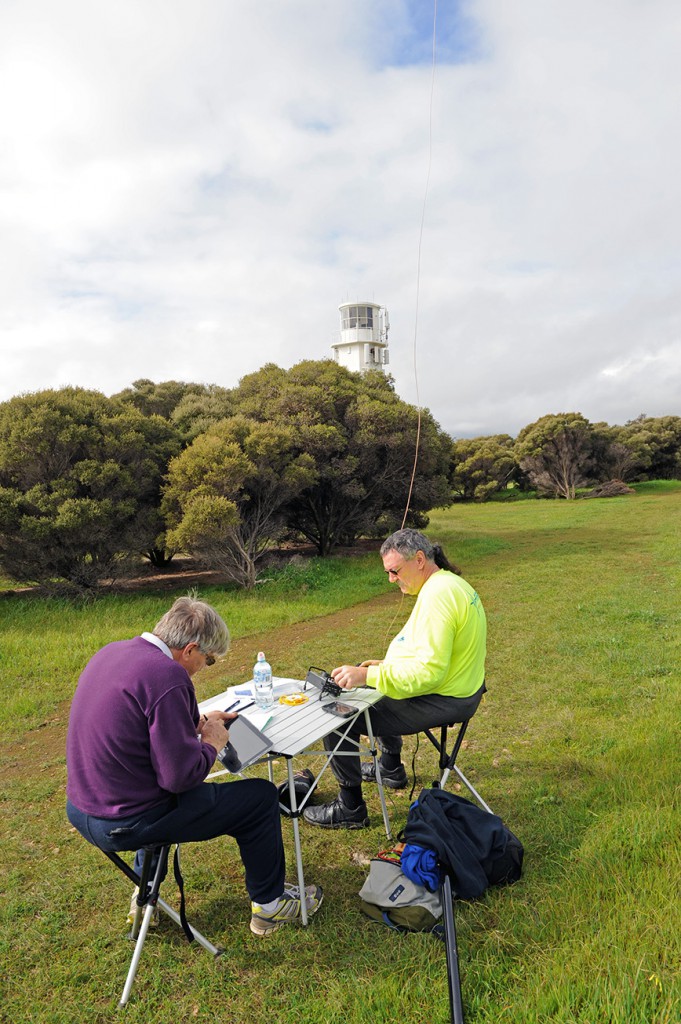 A 5 minute walk up the hill to the Lighthouse – which is in a fenced enclosure in the middle of the conservation park, a bit of a walk around to admire the view to the West across the Gulf and to the North along the coast towards Adelaide, they could see that the rain was clearing. There was a suitable spot to set up a portable station about 50M from the lighthouse overlooking the Gulf.
A 5 minute walk up the hill to the Lighthouse – which is in a fenced enclosure in the middle of the conservation park, a bit of a walk around to admire the view to the West across the Gulf and to the North along the coast towards Adelaide, they could see that the rain was clearing. There was a suitable spot to set up a portable station about 50M from the lighthouse overlooking the Gulf.
Back at the Carpark, Gary, VK5FGRY had arrived and everyone made their way back up and set up the station. The station for this operation was a KX3 and an inverted V on 40M and also a 1/4Wave vertical on 20M
As we were setting up the weather cleared and we were lucky enough to have even better views towards the city and across the Gulf.
Peter VK5KX at Troubridge Hill (Yorke Peninsula)
Once set up, we started looking over the bands and came across another Club Member – Peter, VK5KX who was at Troubridge Hill Lighthouse – AU-0105 and made the first contact for the day at 0455UTC
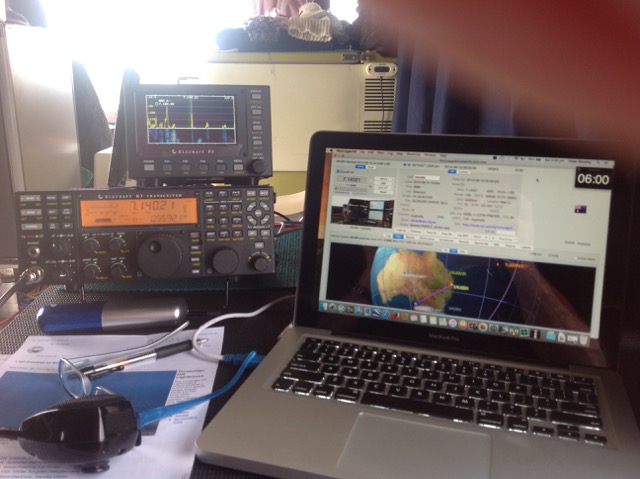
Peter VK5KX Station
Even though the bands were busy with the RD contest it was fairly steady going – conditions were only average. The staion mainly worked 40M and tried 20m for a little while at around the time we would expect and EU activity – but only worked a single station on 20M.
Across the afternoon we had a relaxed time and worked a total of 18 stations with the mix of 2 RD contest stations, 7 other ILLW stations and 9 chasers.The team worked the following Lighthouses: AU-0105, AU-0029, AU-0017, AU-0107, AU-0110, AU-0079 and AU-0007 before packing up around 5pm local time.
All up a fun day was had by everyone involved. It was a great opportunity to undertake some portable operation from some unique landmarks! Congratulations to all involved who braved the wintry weather!
Photo Gallery
Gallery Photos courtesy Gary Hamilton VK5FGRY
Hints & Tips for getting started on FreeDV
The AREG FreeDV QSO Party is getting closer and now would be a great time for you to start setting up their radios so that you can join in on the weekend of September 12th and 13th! More information about the QSO party is available here (click).
The following are some resources you may be interested in to help get your FreeDV station up and running on the air.
What does FreeDV Sound Like?
Firstly, what does a FreeDV Contact sound like in comparison to SSB? Here is an excellent demonstration of this by N4DVR.
How to setup a FreeDV Station?
You can start operating on FreeDV by downloading a program for your computer, and then connecting it to your HF radio via your sound card. The software is an open source program available from the following links:
- Windows 32-bit Installer
- OSX 10.7 to 10.10 App-Bundle (Note: This is still in testing and may have some bugs.)
- Debian package repository, Wheezy x86 and amd64
- Repositories for Fedora, RHEL, and derivatives have moved to a Fedora COPR Repository located here
Next, you need to get your FreeDV software installed on your PC and configured. The following video tutorial is great for explaining how to set up the software.
Once you have the software configured it is time to connect it to a transmitter! The next video is from a presentation made by David VK5DGR at the AREG club meeting where some of the factors to consider when driving a HF radio with FreeDV were discussed.
In summary:
- Less Power is usually better
- Do not run any compression on transmit
- Back the transmitter power off such that the ALC function is barely being activated
- Do not run any receive filtering
The main reason for these tips is that distortion of the signal leads to bit errors. While you may get more transmit power, the signal quality being transmitted will be degraded to the point where even under very good HF path conditions decoding the signal will be very difficult indeed.
Where to go for more support?
If you want more information about FreeDV please visit the www.freedv.org website or log onto Internet Relay Chat (IRC) on irc.freenode.net. (http://webchat.freenode.net/?channels=freedv) and connect to the #freedv channel.








